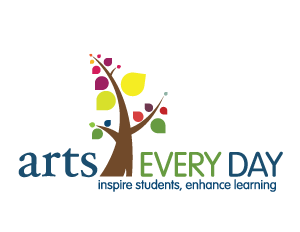
Call to Action!
A New Year means new State and Local education budgets! Here at Arts Every Day, we work with education advocates across the State to demand equitable funding, advocate for arts education in PK-12 education, and track important funding decisions. Make sure YOUR voice is heard by getting involved at the State, District, and School levels:
Maryland State Education Funding
HOW IT WORKS: Here in Maryland, the majority of education funding comes from the State budget. The Governor is required to present a balanced budget based on revenue projections (money collected from State taxes) and expenditures (how money will be spent). The Maryland General Assembly (your elected State representatives) can change how money is spent but cannot add money to the budget. For example, if the General Assembly wants to spend more money on education, they have to take money away from another area of spending in order to keep the budget balanced.
WHAT’S IMPORTANT IN 2021: Last year, the General Assembly approved the Blueprint for Maryland’s Future. This bill will change how education is funded for years to come. Unfortunately, Governor Hogan did not approve of the Blueprint – he vetoed the bill. The General Assembly will try to override the Governor’s veto by vote in the next few weeks. From the Blueprint to helping districts respond to COVID-19, the General Assembly will have a lot of important decisions to make this year. The Maryland Education Coalition (MEC) – a group of education advocates put together this helpful list of recommendations.
ACTION STEPS:
Join the Maryland Education Coalition (MEC) Virtual Town Hall on January 27, 6pm. Register HERE.
Email your legislators: Tell them why education funding is important to YOU. Ask them to override the Blueprint veto, improve equity provisions, AND reference the Code of Maryland Regulations (COMAR) in the bill that will accompany the Blueprint.
Join the Arts Education in Maryland Schools newsletter to stay up to date on all State-level arts education action.
Baltimore City Public School District + School Level Advocacy
HOW IT WORKS: The Baltimore City Public School District receives revenue (money) from Federal grants, the State funding formula and from Baltimore City tax payers. The majority of Baltimore City’s education funding comes from the State. To determine how much money will be available to spend, district office staff members must estimate how much money will be available and how many students will be enrolled. The district develops priorities for spending and determines how much each school will receive for each student enrolled. Principals take the budget provided by the district and decide how that money will be used to operate the building, pay teachers, and purchase materials. Want to know more about the budget process? Watch this 3-minute video!
WHAT’S IMPORTANT IN 2021: Due to ongoing underfunding by the State, delays to the passage of the Blueprint, and the increased costs of operating schools virtually/hybrid, building the budget for next school year will be difficult. District leaders and school principals need to hear why the arts are important to families, students and teachers. In 2018, Baltimore City Public School district adopted a Fine Arts Strategic Plan and Fine Arts Goals. In collaboration with local advocates, arts partners, leaders, the district continues to improve access to the arts – especially Visual Art and Music. We must work to make sure the arts remain a district priority. Read our 2021-22 Budget Recommendations letter.
ACTION STEPS:
Complete this 2021 Budget Priority Survey and stay tuned for future district conversations on the budget.
Attend your school’s community budget meeting. Every school is required to hold at least 2 budget meetings for students, parents, caregivers, and community members. Find meeting dates for your school here.
When principals build their budgets, they work to implement district budget guidance for every subject – including the arts! Ask your school principal if your school is in compliance with the district’s student to Fine Arts Teacher ratio.
Did you know that access to the arts looks a lot different in other counties across Maryland? Arts Education in Maryland Schools has developed ArtlookMD, an interactive map of arts access. Use this tool to look at how your school compares with other schools across the district/state.
Find other parents, teachers, students that care about the arts at your school! Organize meetings to discuss arts access, plan fundraisers to support your Fine Arts teachers, organize student arts showcases.
For questions, please contact us at info@artseveryday.org.


No comments yet.